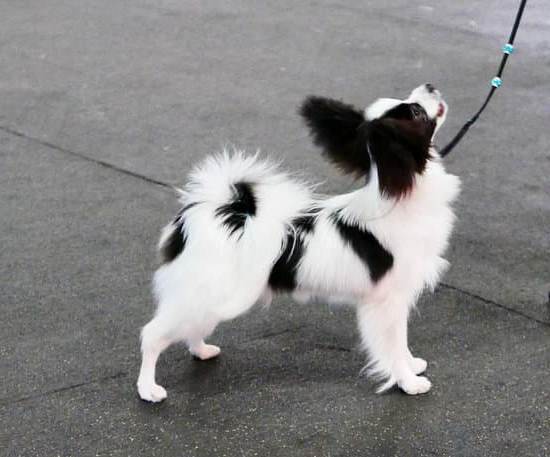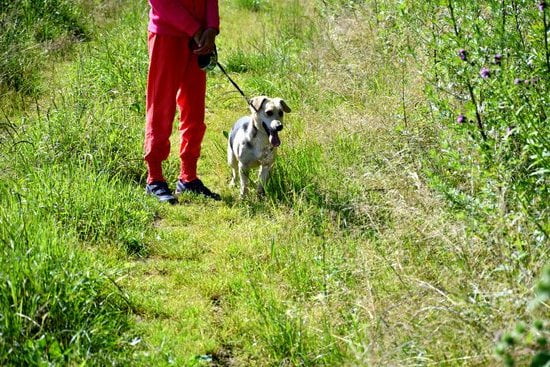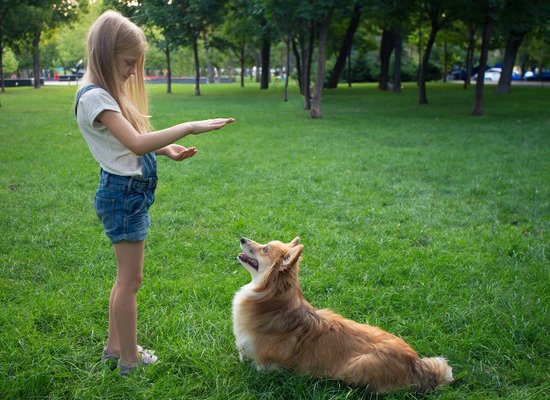Training a dog with a halter collar can be an effective way to teach your furry friend proper behavior and leash manners. Halter collars provide gentle, yet firm control over your dog’s movements, making it easier to guide them during training sessions. In this comprehensive guide, we will explore the ins and outs of using a halter collar to train your dog effectively.
Halter collars are designed to be an alternative to traditional collars like choke or prong collars, offering a more humane approach to training. By distributing pressure evenly around your dog’s neck and head, halter collars help prevent any strain or discomfort. Understanding the difference between traditional collars and halter collars is crucial in realizing the benefits they can bring to your training sessions.
When selecting a halter collar for your dog, it’s important to consider their size and breed. Different breeds may require specific types of halter collars to ensure proper fit and functionality. Proper fitting and adjusting of the halter collar are essential for your dog’s comfort and safety during training. Stay tuned as we dive deeper into how you can choose the right halter collar for your furry companion in the upcoming sections.
Understanding the Difference Between Traditional Collars and Halter Collars
When it comes to training your dog, the type of collar you choose can have a significant impact on your success. Traditional collars, such as flat buckle or martingale collars, attach around your dog’s neck and provide control by applying pressure to the neck when pulled.
On the other hand, halter collars, also known as head halters or gentle leader collars, work by gently guiding the dog’s head instead of putting pressure on their neck. This difference in design can make a significant impact on how you train your dog.
Reduced Risk of Neck Injuries
One of the key differences between traditional collars and halter collars is the reduced risk of neck injuries with a halter collar. Traditional collars can put strain on your dog’s neck when they pull or lunge, potentially leading to injuries like tracheal collapse or damage to the cervical vertebrae.
Halter collars distribute pressure more evenly across your dog’s head and neck, reducing the risk of these types of injuries. This makes them a safer option for dogs who tend to pull on walks or exhibit leash reactivity.
Greater Control and Communication
Halter collars offer more control and enhanced communication between you and your dog during training sessions. By guiding your dog’s head rather than relying on pressure around their neck, you can effectively redirect their attention and behavior.
The design of halter collars allows for gentle steering motions that encourage your dog to focus on you as their leader. This increased control can be especially beneficial when working on obedience training or addressing behavior issues like pulling on the leash or jumping up on people.
Selecting the Right Halter Collar for Your Dog’s Size and Breed
When it comes to training your dog with a halter collar, one of the most important steps is selecting the right collar for your dog’s size and breed. Not all dogs are the same, and different breeds may have specific needs when it comes to training equipment. Here are some tips on how to choose the perfect halter collar for your furry friend:
- Consider your dog’s size: Larger dogs may require a sturdier halter collar that can withstand their strength, while smaller dogs may need a lighter option. Make sure to measure your dog’s neck circumference accurately before purchasing a halter collar.
- Take into account your dog’s breed: Certain breeds, such as brachycephalic breeds like pugs or bulldogs, may benefit from a specific type of halter collar that won’t put pressure on their breathing. Research which halter collars are best suited for your dog’s breed before making a decision.
- Check for adjustability: A good halter collar should be adjustable to ensure a proper fit on your dog. Look for collars with multiple points of adjustment so you can customize it to your dog’s unique measurements.
By taking the time to select the right halter collar for your dog’s size and breed, you set them up for success in their training journey. Remember that each dog is different, so what works for one may not work for another. Invest in a quality halter collar that fits well and suits your dog’s specific needs.
Training Your Dog With A Halter Collar can be an effective way to correct behaviors without causing harm to them in any way. It helps divert attention from pulling or excessive leash behavior while providing comfort around their neck area. Nonetheless, To successfully train your canine using this tool requires time and patience.
- Start by getting them used to wearing the harness when they’re at home so they can associate it with positive experiences.
- Use treats or rewards during training sessions to encourage desired behaviors while wearing the halter collar.
- Be consistent in your training methods and use positive reinforcement techniques whenever they exhibit good leash manners.
Remember, every dog learns at its own pace, so don’t get discouraged if progress is slow initially. With dedication and consistency, you’ll soon see improvement in your canine companion’s behavior while walking on a leash with a halter collar.
Proper Fitting and Adjusting of the Halter Collar
Ensuring the proper fit of a halter collar is essential for your dog’s comfort and safety during training sessions. The first step is to measure your dog’s neck size accurately to select the appropriate size of halter collar. It’s crucial that the halter fits snugly, but not too tight, as this can cause discomfort or restrict your dog’s movement. Most halter collars come with adjustable straps to customize the fit to your dog’s specific measurements.
Once you have selected the right size halter collar for your dog, it’s time to adjust it properly. Start by placing the collar over your dog’s head, making sure that the straps go behind their ears and around their neck without any twists.
The leash attachment should be on the front of their chest for optimal control and to discourage pulling behavior. Adjust the straps accordingly to ensure a comfortable and secure fit, while also allowing your dog to move freely without any restrictions.
When fitting and adjusting a halter collar, it’s important to check regularly for any signs of rubbing or chafing on your dog’s skin. Make sure that all buckles and straps are in good condition and not causing any discomfort. Remember, a well-fitted halter collar will not only make training more effective but also provide a positive experience for your furry friend as they learn how to walk politely on a leash using this training tool.
Positive Reinforcement Training Techniques With a Halter Collar
Using Treats and Praise
One of the key components of positive reinforcement training with a halter collar is using treats and praise to reward good behavior. When your dog follows a command correctly or exhibits a desirable behavior, immediately give them a tasty treat or offer enthusiastic praise. This reinforces the idea that the action they just performed is what you want from them, making it more likely they will repeat it in the future.
Consistency Is Key
Consistency is crucial when using positive reinforcement training techniques with a halter collar. Make sure everyone in your household is on the same page when it comes to commands and rewards.
If one person allows certain behaviors while another does not, it can confuse your dog and slow down their progress. Additionally, be consistent in the timing of your rewards – make sure to praise or give treats immediately after your dog performs the desired behavior so they can easily connect the two.
Redirecting Negative Behaviors
When your dog displays negative behaviors such as pulling on the leash while wearing a halter collar, it’s important to redirect their attention instead of punishing them. For example, if your dog starts pulling, stop walking and wait for them to calm down before continuing. Once they are walking calmly again, reward them with treats and praise.
This teaches your dog that good behavior leads to positive outcomes, encouraging them to behave appropriately in the future. By consistently using positive reinforcement techniques like these, you can effectively train your dog with a halter collar while strengthening your bond with them at the same time.
Introducing the Halter Collar to Your Dog for the First Time
When introducing a halter collar to your dog for the first time, it is essential to approach the process with patience and positive reinforcement. Here are some steps you can follow to ensure a smooth transition for your furry friend:
1. Familiarize Your Dog with the Collar: Before putting the halter collar on your dog, allow them to sniff and investigate it. This will help them get used to the scent and feel of the collar before actually wearing it.
2. Positive Association: Associate the collar with positive experiences by offering treats or praise while showing it to your dog. This will create a positive association with the collar and make them more receptive to wearing it.
3. Gradual Introduction: Start by putting the halter collar on your dog for short periods indoors, allowing them to adjust slowly. Use treats and encouragement to reward calm behavior while wearing the collar.
Remember, every dog is different, so be patient and take small steps towards getting your pup comfortable with their new halter collar. With consistency and positive reinforcement, you can successfully train your dog to wear a halter collar without any issues.
Training Your Dog to Walk on a Leash With a Halter Collar
When using a halter collar to train your dog to walk on a leash, it is essential to start gradually. Begin by introducing the halter collar to your dog in a comfortable and positive environment. Allow them to sniff and explore the collar before putting it on them. Use treats and praise to create positive associations with the halter collar.
Once your dog is comfortable with the halter collar, you can start practicing walking on a leash. Make sure the collar is properly fitted and adjusted to prevent any discomfort for your dog. Use positive reinforcement techniques such as treats, toys, or verbal praise to reward good behavior while walking. Remember to be patient and consistent in your training efforts to help your dog learn how to walk calmly on a leash with their halter collar.
| Training Tip | Effectiveness |
|---|---|
| Start Training Gradually | High – Provides Comfortable Introduction |
| Use Positive Reinforcement Techniques | Very High – Encourages Good Behavior |
| Be Patient and Consistent | High – Helps Dog Learn Effectively |
Advanced Training Tips and Troubleshooting Common Issues
When it comes to training your dog with a halter collar, there are some advanced tips that can help you make the most out of this training tool. One key tip is to start slow and gradually increase the level of distractions during training sessions.
This will help your dog focus on following your commands even when there are other stimuli around. Additionally, practicing in different environments can help reinforce good behavior and ensure that your dog responds well regardless of the setting.
Another important aspect of advanced training with a halter collar is to practice impulse control exercises. Teaching your dog to wait patiently before crossing a street, greeting another dog, or receiving a treat can be beneficial in improving their overall behavior. This type of training can also prevent leash pulling and jumping on people, which are common issues that can be addressed with consistent practice and positive reinforcement.
In case you encounter any challenges or common issues while using a halter collar for training, it’s essential to troubleshoot effectively. For example, if your dog is struggling with wearing the halter collar, try introducing it gradually by associating it with treats and positive experiences.
If your dog shows resistance during walks, consider revisiting basic leash training techniques or seeking guidance from a professional trainer. Remember to be patient and persistent in addressing any obstacles that may arise during the training process as building a strong bond with your furry companion takes time and dedication.
The Importance of Consistency and Patience in Training With a Halter Collar
Training a dog with a halter collar requires consistency and patience from the owner. These are key elements in successfully teaching your dog how to behave while wearing this type of collar. Consistency in training means setting clear rules and expectations for your pet and ensuring that those rules are followed every time. This helps the dog understand what is required of them and reinforces good behavior.
Patience is also crucial when training with a halter collar because learning takes time, especially for dogs who may not be familiar with this type of collar. It’s important to remember that each dog learns at their own pace, so being patient and understanding will create a positive learning environment for both you and your furry companion.
Rushing the training process can lead to confusion and frustration for your dog, so taking it slow and allowing enough time for them to adjust is key.
Incorporating positive reinforcement techniques is another essential aspect of training with a halter collar. Rewarding good behavior with treats, praise, or playtime can help your dog associate wearing the halter collar with positive experiences. This will encourage them to continue behaving well while wearing the collar. By staying consistent, patient, and using positive reinforcement, you can effectively train your dog to walk on a leash with a halter collar and build a strong bond based on trust and respect.
Conclusion
Training a dog with a halter collar can be a rewarding experience for both you and your furry companion. By using positive reinforcement techniques, proper fitting, and consistency, you can successfully train your dog to walk on a leash and correct any behavioral issues. It’s important to understand the differences between traditional collars and halter collars, as well as select the right size and type of halter collar for your dog’s breed and size.
As you introduce the halter collar to your dog for the first time, patience is key. Some dogs may initially resist wearing it, but with gentle encouragement and rewards, they will eventually become accustomed to it. When training your dog to walk on a leash with a halter collar, start in a quiet and familiar environment before gradually introducing distractions. Use treats or praise to reinforce good behavior and make the training experience positive for your dog.
Advanced training tips can help address common issues like pulling or lunging while on a leash. Consistent training sessions and clear communication with your dog will lead to progress over time. Remember that building a strong bond with your dog is essential in successful training – celebrate every small achievement along the way. By investing time and effort in training with a halter collar, you are not only teaching your dog good behavior but also strengthening the bond between you both.
Frequently Asked Questions
How Do You Halter Train a Dog?
To halter train a dog, it’s important to introduce the head halter gradually. Start by letting the dog sniff and investigate the halter before putting it on. Once the dog is comfortable, slowly start putting it on for short periods while offering treats and positive reinforcement.
How Do You Desensitize a Dog to a Head Halter?
Desensitizing a dog to a head halter involves a similar approach as training with positive reinforcement. Start by simply showing the head halter to the dog and rewarding calm behavior. Gradually progress to touching, then putting on briefly, all while rewarding positive reactions. Consistency and patience are key.
Is It Better to Leash Train a Dog With a Collar or Harness?
The choice between leash training with a collar or harness depends on the individual dog’s needs and behavior. Collars are good for dogs who walk well and don’t pull, while harnesses can provide more control over pulling behaviors or for dogs prone to tracheal issues.
It’s best to assess your dog’s behavior and consult with a professional trainer for guidance.

Welcome to the blog! I am a professional dog trainer and have been working with dogs for many years. In this blog, I will be discussing various topics related to dog training, including tips, tricks, and advice. I hope you find this information helpful and informative. Thanks for reading!





